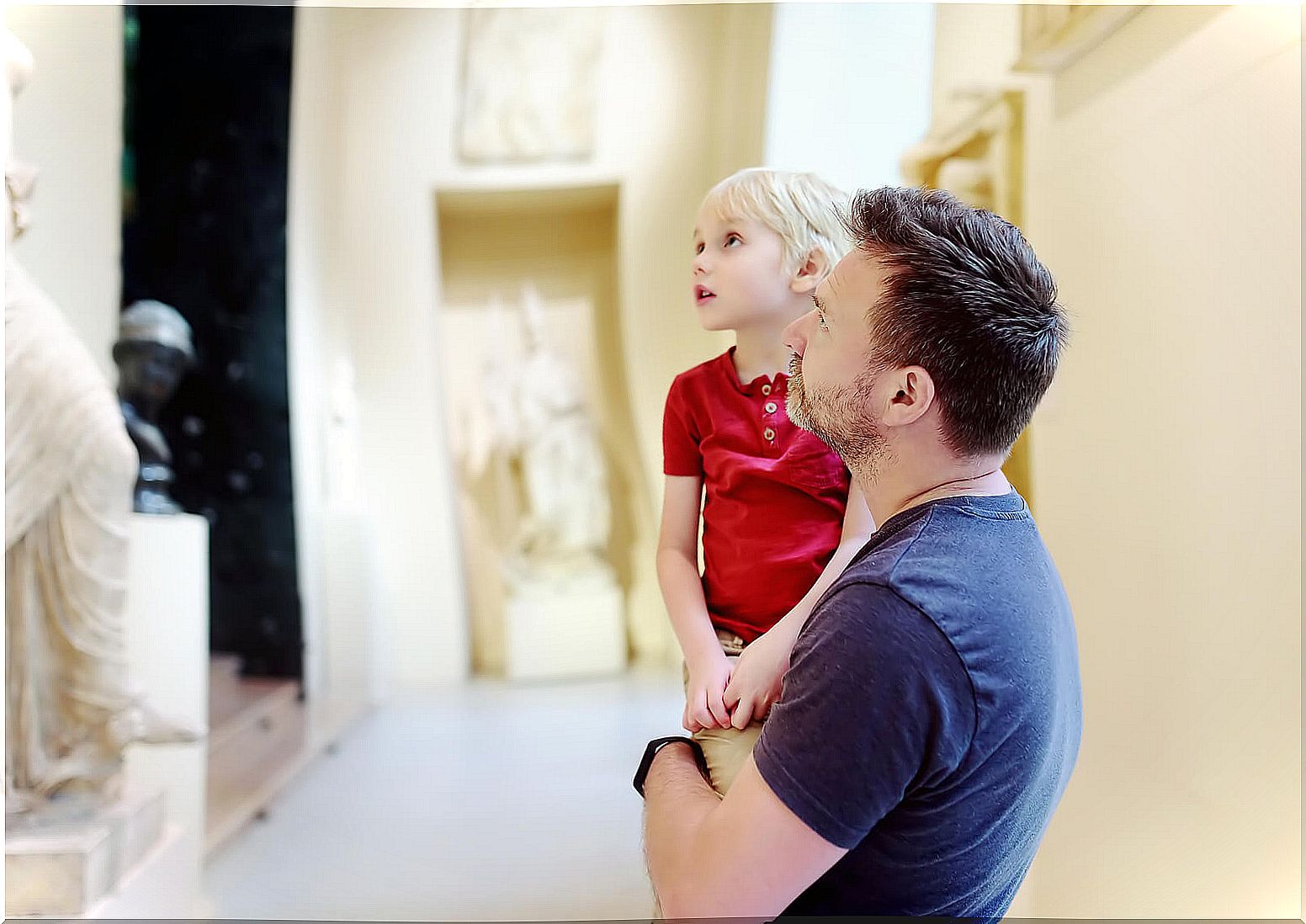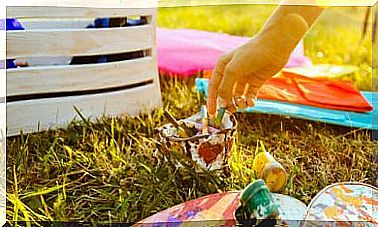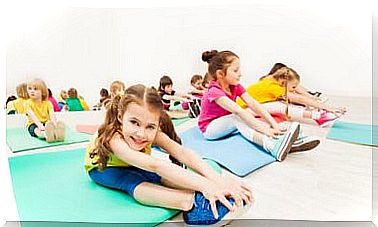6 Keys To Bring Art Closer To Children

Bringing art closer to children will allow you to teach them the value of beauty first-hand, as well as immerse them in the world of creativity and imagination, so identified with childhood. The key to this task is knowing how to do it without becoming an obligation, but rather preserving the essence of freedom, which is one of the main characteristics of art.
But first it is important to know the reasons for doing it. Thus, you will be able to understand the importance of art and the benefits it brings to children.
Why bring art to children?
Art is a form of expression that allows us to express feelings and emotions. In combination with intellectual learning, it favors a more complete development of the brain, with the consequent benefits:

- It enhances creativity and the ability to solve problems based on it and fosters children’s self-esteem.
- Through artistic expression, the externalization of the inner world of the little ones is favored.
- Art and intellectual learning feed off each other. According to a publication of the Observatory for Educational Innovation of the TEC of Mexico, students involved with art tend to achieve better academic results.
- Artistic expressions favor the development of gross and fine motor skills.
- It promotes socialization, integration and companionship.
- Learning about different cultures and their artistic expressions teaches children about diversity.
- Art stimulates sensory perception, the capacity for observation and analysis.
Once this long list of benefits is known, we propose some ways for the little ones to access them while they enjoy art.
Keys to bring art to children
The physical spaces in which art is exhibited or taught offer a variety of activities for children. Cultural centers, libraries, museums, even parks with works of art are exceptional places to bring art to the little ones in a didactic, entertaining and fun way.
Even at home you can generate interest in art if the little ones see that you spend part of your time doing some activity related to it. Probably, if you dedicate yourself to painting, reading, listening to music, watching movies …, and you enjoy it, beyond the passing entertainment, they will learn those habits and also approach art.
The school can also bring art to children through art education, but also as content in other subjects. In this sense, Language and Literature, Mathematics, History, Geography and language teaching are great vehicles for learning about art and culture.
In any case, there are certain keys to bring art closer to children that will help you a lot on that path and that can be given in any of the aforementioned areas. Get to know them below.
1. Encourage reading about art topics
Whether at home, as a school task or in reading workshops, stories, stories about the lives of artists and their works, books about painting, sculpture, plays, etc., are very useful.
2. Plan cultural and artistic visits
For these types of activities it is important that you choose the space to visit according to age and respect the preferences of the children. At present there are museums specially created for children and also special areas within them that develop children’s programs, workshops and visit planning adapted to the interests of each age group.
3. Organize walks outside to bring art to children
Take advantage of walks in green spaces such as squares or parks where works of art are exhibited, concerts are held or buildings with special architectures can be seen. These types of places are great to bring art to children in an open and relaxed environment. For example, touring a Japanese-style garden or a planned park with sculptures is a fun and educational outing.
4. Schedule the children’s attendance at a cultural center
This extracurricular activity has taken on great relevance in recent years. In these types of spaces, workshops on theater, painting, drawing, music, dance, acrobatics, dance, photography, games spaces and hundreds of other proposals are offered.

Here it is important that you allow the children to rotate through the proposals and experiment in which of them they feel most comfortable. The key is to make the little ones use art to express themselves, therefore, comfort, both inside and outside, is important.
5. Integrate technology with art
In these days of interactive screens you can transform technology into your ally to bring art to the little ones. An interesting proposal that most museums offer are interactive online applications or games .
Some of the best known are ExperimentNow! and Crononautas , from the Museo Nacional Thysssen-Bornemisza in Madrid; MoMa ArtLabs, of the Museum of Modern Art in New York, and the app of the National Gallery of Art, NGAKids Zone .
6. Art is not imposed
Bringing art closer to children is a path that requires patience, respect and freedom. It is not valid, for example, to impose an exit to the museum, nor to accompany them out of obligation. There has to be a joint planning in which you respect their tastes and also understand that the child has the freedom to tell you that they prefer to see dinosaurs over paintings.
Try several ways, because the options are many! Surely you can bring art to children when they find their genuine interest ; that will be the moment to share and enjoy art with them.










